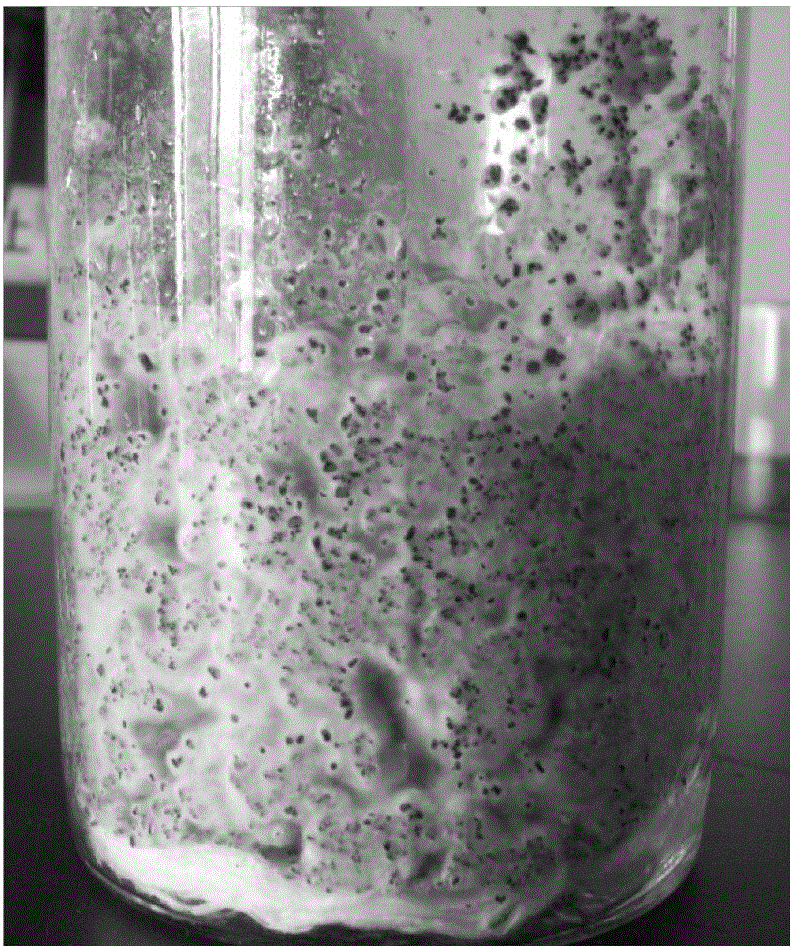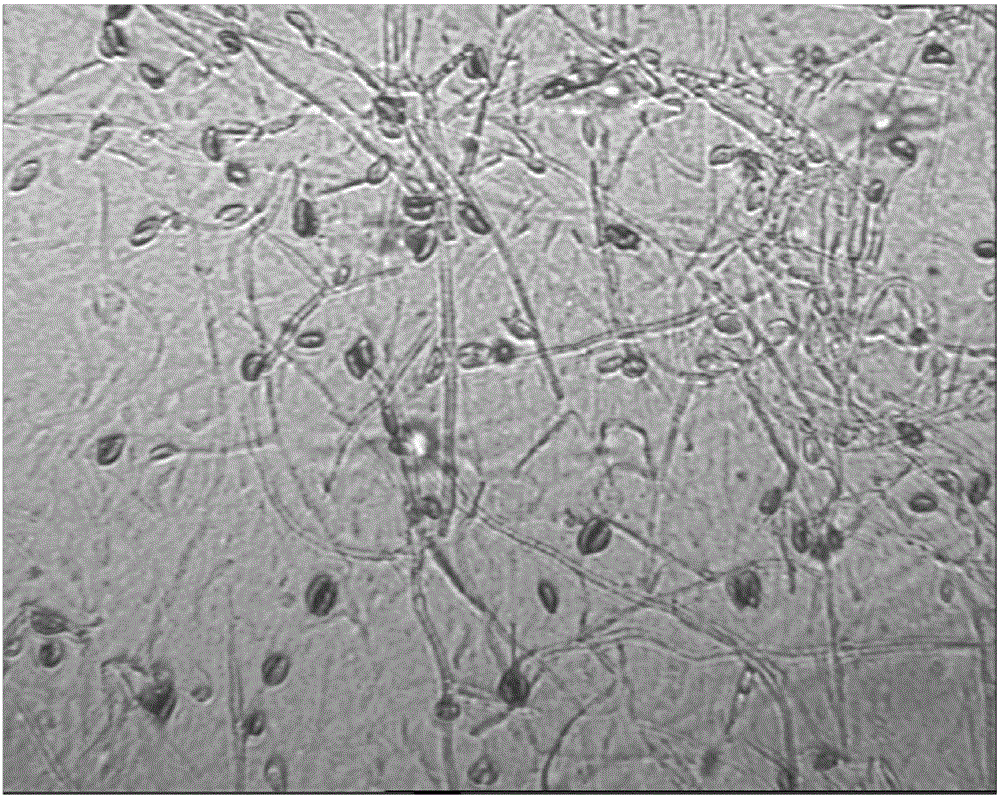A kind of method for cultivating fungus residue to promote the production of conidia by Trichosporum sinensis
A technology of Chinese hairy spores and conidia, which is applied in the field of microorganisms to achieve the effects of short cycle, shortened induction time, and increased quantity
- Summary
- Abstract
- Description
- Claims
- Application Information
AI Technical Summary
Problems solved by technology
Method used
Image
Examples
Embodiment 1
[0028] Medium formula (mass percentage): silkworm chrysalis powder 0.5%, peptone 1%, yeast powder 2%, glucose 2%, anhydrous magnesium sulfate 0.05%, potassium dihydrogen phosphate 0.1%, zinc sulfate heptahydrate 0.0013%, aspartic ammonia Acid 0.1%, vitamin C 0.1%, pure milk 8%.
[0029] Collect the wild fresh Cordyceps sinensis ascospores, pick the monoascospores through the stereoscope and cultivate them, obtain the test tube slope of the Trichospores monospore colony after purification and culture; And pick a few pieces of 0.5cm 2 Bacterial blocks of about the size are inoculated in the medium that can obtain a large amount of mycelium, and the bacterial blocks are evenly crushed with a sterile homogenizer, and cultured in a constant temperature shaker at 120 rpm at 20°C for 10 days, which is recorded as a first-class shaker flask , the primary shake flask was expanded and cultivated under the same culture conditions for 5 days, which was recorded as the secondary shake fla...
Embodiment 2
[0032] Medium formula (mass percentage): silkworm chrysalis powder 0.5%, peptone 1.5%, yeast powder 1%, glucose 3%, anhydrous magnesium sulfate 0.05%, potassium dihydrogen phosphate 0.1%, zinc sulfate heptahydrate 0.0013%, aspartic acid Acid 0.1%, vitamin C 0.1%, pure milk 8%.
[0033]Collect the wild fresh Cordyceps sinensis ascospores, pick the monoascospores through the stereoscope and cultivate them, obtain the test tube slope of the Trichospores monospore colony after purification and culture; And pick a few pieces of 0.5cm 2 Bacterial blocks of about the size are inoculated in the medium that can obtain a large amount of mycelium, and the bacterial blocks are evenly crushed with a sterile homogenizer, and cultured in a constant temperature shaker at 120 rpm at 20°C for 10 days, which is recorded as a first-class shaker flask , the primary shake flask was expanded and cultivated under the same culture conditions for 5 days, which was recorded as the secondary shake flask...
Embodiment 3
[0036] Medium formula (mass percentage): silkworm chrysalis powder 0.5%, peptone 1%, yeast powder 2%, glucose 2%, anhydrous magnesium sulfate 0.05%, potassium dihydrogen phosphate 0.1%, zinc sulfate heptahydrate 0.0013%, aspartic ammonia Acid 0.1%, vitamin C 0.1%, pure milk 8%.
[0037] Collect the wild fresh Cordyceps sinensis ascospores, pick the monoascospores through the stereoscope and cultivate them, obtain the test tube slope of the Trichospores monospore colony after purification and culture; And pick a few pieces of 0.5cm 2 Bacterial blocks of about the size are inoculated in the medium that can obtain a large amount of mycelium, and the bacterial blocks are evenly crushed with a sterile homogenizer, and cultured in a constant temperature shaker at 120 rpm at 20°C for 10 days, which is recorded as a first-class shaker flask , the primary shake flask was expanded and cultivated under the same culture conditions for 5 days, which was recorded as the secondary shake fla...
PUM
 Login to View More
Login to View More Abstract
Description
Claims
Application Information
 Login to View More
Login to View More - R&D
- Intellectual Property
- Life Sciences
- Materials
- Tech Scout
- Unparalleled Data Quality
- Higher Quality Content
- 60% Fewer Hallucinations
Browse by: Latest US Patents, China's latest patents, Technical Efficacy Thesaurus, Application Domain, Technology Topic, Popular Technical Reports.
© 2025 PatSnap. All rights reserved.Legal|Privacy policy|Modern Slavery Act Transparency Statement|Sitemap|About US| Contact US: help@patsnap.com


